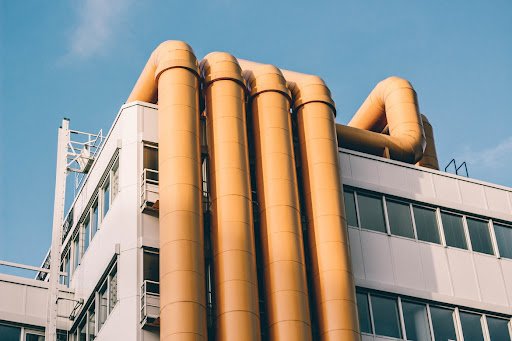Industrial projects demand a distinct approach to architecture. Unlike commercial or residential buildings, industrial projects must incorporate functionality, efficiency, and safety to support complex operations and heavy-duty processes. Architects play a pivotal role in achieving these goals, offering expertise in creating spaces that not only meet regulatory requirements but also optimize productivity and sustainability. From conceptualization to final construction, architects guide every phase of industrial project development, blending technical insight with strategic planning.
Initial Planning and Site Analysis
One of the first responsibilities of architects in industrial project development is conducting a thorough site analysis. Industrial projects typically require expansive land, high access points, and a certain level of structural resilience, so architects must evaluate the suitability of a site before design begins. This stage involves studying factors like soil stability, zoning restrictions, environmental impact, and logistical access to ensure that the site meets both the project’s requirements and future growth potential.
During this phase, architects collaborate closely with clients to understand the specific needs of the industry, from machinery and workflow to future expansions. This understanding is crucial for creating a design that not only accommodates current operations but is adaptable for change. A well-thought-out site analysis helps avoid costly adjustments later on, allowing the project to progress efficiently.
Designing for Functionality and Safety
In industrial architecture, functionality reigns supreme. Architects prioritize the spatial arrangement and infrastructure to maximize workflow efficiency. This process involves careful placement of production lines, material storage areas, loading docks, and administrative spaces to support smooth operational flow. Unlike traditional architecture, which may focus heavily on aesthetics, industrial design emphasizes functionality and accessibility.
Safety is equally paramount in industrial spaces, as these environments often house heavy machinery, hazardous materials, and intricate systems. Architects work within strict building codes and safety regulations, integrating fire-resistant materials, ventilation systems, and emergency exits. They may also incorporate specific design features to minimize risks, such as reinforced flooring for heavy equipment, slip-resistant surfaces, and high-visibility signage.
Industrial architects ensure that each element of the structure is compatible with operational needs while maintaining rigorous safety standards. This dual focus on functionality and safety directly impacts the productivity and well-being of everyone who operates within the space.
Sustainability and Energy Efficiency
Today, sustainability is a cornerstone in architectural design, and industrial projects are no exception. Architects in this field aim to reduce environmental impact while cutting long-term operational costs through energy-efficient design. This can include incorporating natural lighting to reduce dependency on artificial lighting, using eco-friendly materials, and designing layouts that encourage natural airflow, reducing the need for mechanical ventilation.
For example, usine architects Stendel + Reich focus on sustainable practices by implementing energy-efficient designs that support a healthier work environment and reduce energy consumption. This commitment to green architecture not only aligns with regulatory standards but also appeals to clients looking to reduce their carbon footprint. Sustainable designs in industrial projects are often more economical over time, thanks to lower energy costs and reduced maintenance.
Advanced Technology Integration
With the rise of digital transformation, modern industrial projects often involve advanced technology. Architects play a significant role in integrating smart technology within industrial structures, from automated systems to Internet of Things (IoT) applications. Smart technology can improve monitoring and control over equipment, enhancing operational efficiency and safety.
By designing spaces that support these technological needs, architects ensure that industrial buildings are future-ready. This might include incorporating specialized areas for servers and control systems, conduits for data wiring, and secure rooms for sensitive equipment. Technology integration also allows architects to incorporate real-time monitoring and predictive maintenance systems, reducing downtime and prolonging equipment life.
Collaboration and Project Management
Industrial project development is inherently collaborative, requiring input from engineers, contractors, and other specialists. Architects serve as the linchpin in this collaboration, overseeing the project’s progress to ensure all design requirements are met while managing timelines and budgets. Their role involves coordinating with engineers to verify that structural elements support both the building and the equipment within it.
Architects also communicate with regulatory agencies to secure permits, conduct inspections, and ensure compliance with environmental and safety standards. Effective project management by architects minimizes the risk of costly delays or design changes, keeping the project on track and within budget.
Flexibility for Future Needs
The industrial sector is constantly evolving, and facilities must adapt to new processes, technologies, and expansion requirements. Architects address these future needs by designing adaptable spaces, allowing the facility to evolve without needing extensive reconstruction. For example, open floor plans, modular spaces, and scalable utility systems all provide the flexibility required for growth or change.
Incorporating adaptability ensures that industrial projects remain functional and relevant, reducing the need for costly renovations down the line. By creating versatile spaces, architects enable companies to pivot quickly, supporting long-term business agility.
Conclusion
Architects play a vital role in the successful development of industrial projects. Their expertise goes beyond structural design; they ensure safety, sustainability, and efficiency while accommodating the unique needs of industrial processes. From initial planning and site analysis to integrating smart technologies, architects influence every phase of the project, creating spaces that align with both current operational demands and future growth potential.
The impact of skilled industrial architects, such as those at Stendel + Reich, extends well beyond the blueprint, driving productivity and supporting sustainable, adaptable infrastructure.




